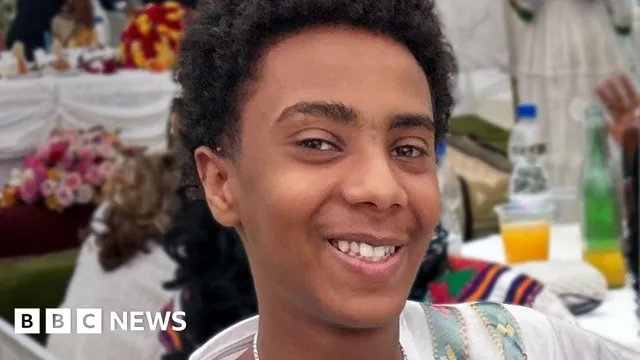
Third teenager charged in connection with Amen Teklay's death
2025-03-23 21:46- Amen Teklay was found seriously injured in Glasgow on March 5, 2025, and died shortly thereafter.
- Three teenage boys, aged 14, 15, and 16, have been charged in relation to his death, with one facing murder charges.
- The local community is in shock, mourning Amen's loss and calling for action against youth violence.
Express your sentiment!
Insights
In Glasgow, Scotland, a tragic incident unfolded on March 5, 2025, when 15-year-old Amen Teklay was found seriously injured in Clarendon Street. He was originally pronounced dead at the scene shortly after police responded to the emergency call. Amen, an Eritrean refugee and a bright student at St Thomas Aquinas Secondary School, was beloved by his peers, which has left the community in shock and mourning following the violent episode. Shortly after his passing, police launched a murder investigation to uncover the circumstances surrounding the event. Initially, two teenage boys, aged 14 and 15, were arrested and charged within days of the incident. The 14-year-old faced serious accusations, including murder, assault, and possession of an offensive weapon, while the 15-year-old was charged with assault. Both of these boys appeared in court on March 10. Ongoing investigations and community sentiment have played a critical role in the efforts to seek justice for Amen Teklay. As the situation continued to develop, authorities announced a third arrest on March 24, 2025, identifying a 16-year-old boy who has also been charged in connection with the schoolboy's death. Police Scotland indicated that this new suspect would appear in court soon, with a report being submitted to the procurator fiscal, the public prosecutor responsible for criminal prosecutions in Scotland. The swift actions taken by law enforcement illustrate the seriousness of the case and the priority placed on resolving the circumstances surrounding Amen’s untimely death. The loss of Amen Teklay has sparked deep grief and calls for community solidarity against youth violence. His former headteacher, Claire McInally, described him as a friendly and talented young man, highlighting the void created not only in his family but throughout the school and the broader community. Leaders from various sectors, including education and local authorities, are reflecting on the tragic loss and are developing initiatives to support the grieving community and prevent future incidents of violence.
Contexts
The impact of knife crime in Scotland has emerged as a significant issue in recent years, necessitating a detailed examination of its breadth and underlying causes. The prevalence of knife-related incidents has sparked growing concern among policymakers, law enforcement, and communities alike. Analyzing data from recent years reveals patterns in demographics, locations, and circumstances surrounding knife crime. It is essential to understand that knife crime is not only a law enforcement issue but also a social one, deeply intertwined with factors such as poverty, inequality, and educational opportunities. Community engagement and local initiatives play a vital role in addressing these root causes and reducing instances of violence among young individuals, who are often disproportionately affected by this type of crime. The consequences of knife crime extend beyond the immediate physical harm to victims; they significantly impact families, communities, and society as a whole. The traumatic experience of violence can lead to lasting psychological effects for victims and witnesses, creating a cycle of fear and insecurity within neighborhoods. Furthermore, the financial cost of knife crime—stemming from healthcare, legal proceedings, and lost productivity—places a heavy burden on public resources. Tackling this issue requires a multifaceted approach, incorporating prevention strategies, effective policing, and support services for both victims and offenders. Recent programs aimed at violence reduction have shown promise, emphasizing education, mentorship, and the promotion of non-violent conflict resolution. By fostering strong community ties and building trust between citizens and law enforcement, Scotland has the opportunity to create a more unified front against knife crime. Additionally, schools and youth organizations can implement proactive measures, providing young people with the tools necessary to resist the allure of gang culture and violence. Ensuring access to mental health resources and supportive environments will also be crucial in preventing youth from resorting to knives as a means of addressing conflicts. As Scotland navigates the complexities of knife crime, ongoing data collection and analysis are imperative in shaping future policies. Collaborative efforts among government bodies, community organizations, and educational institutions will be essential for developing targeted interventions that address the roots of this issue. Striving for a future where knife crime is significantly reduced, Scotland must harness collective action, ensuring that every citizen feels safe and valued in their community. With a concerted effort towards education, social reform, and community resilience, it is possible to shift the narrative surrounding knife crime and pave the way for a more peaceful society.